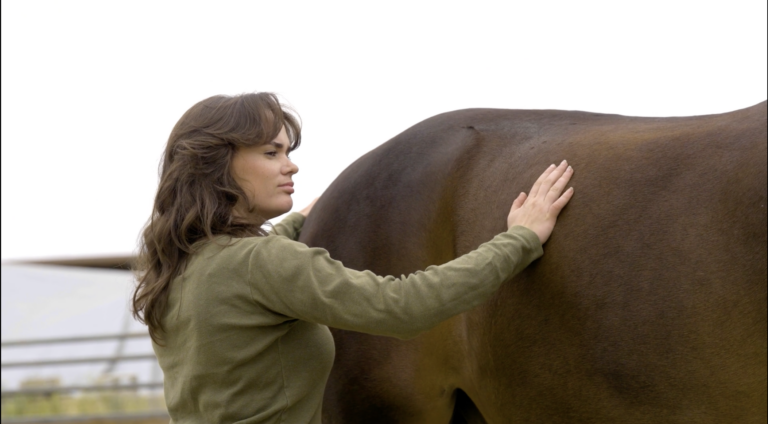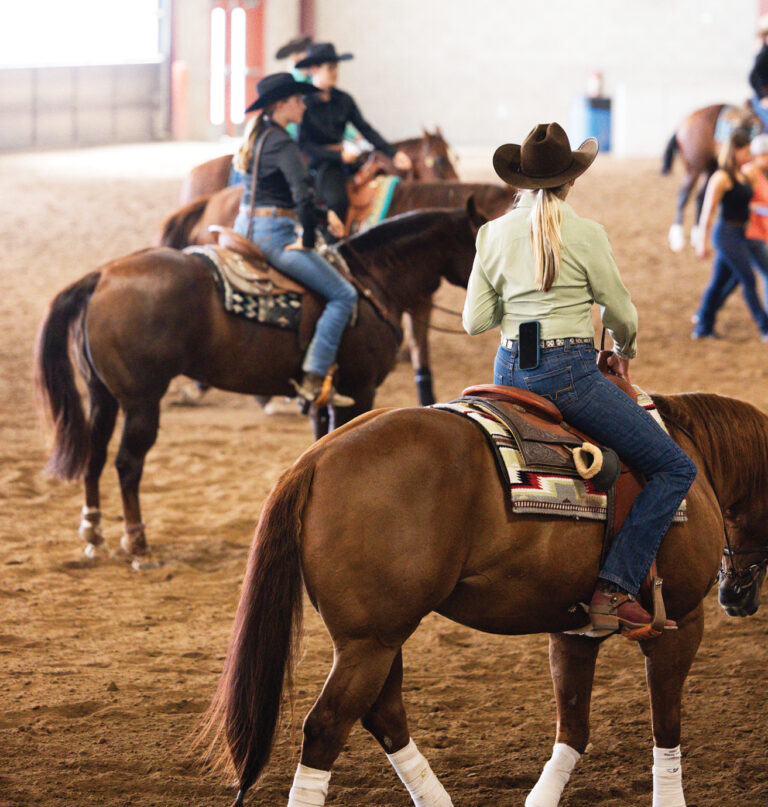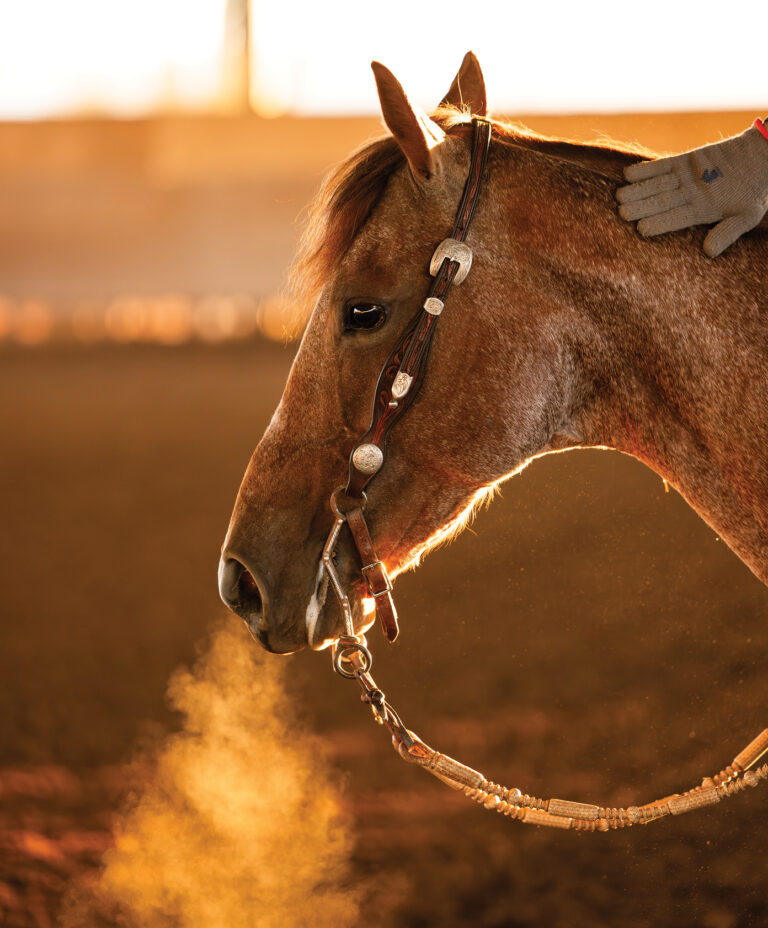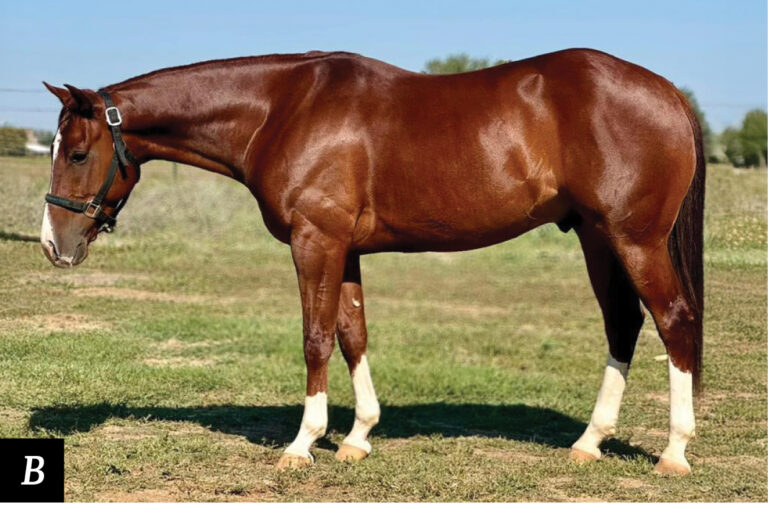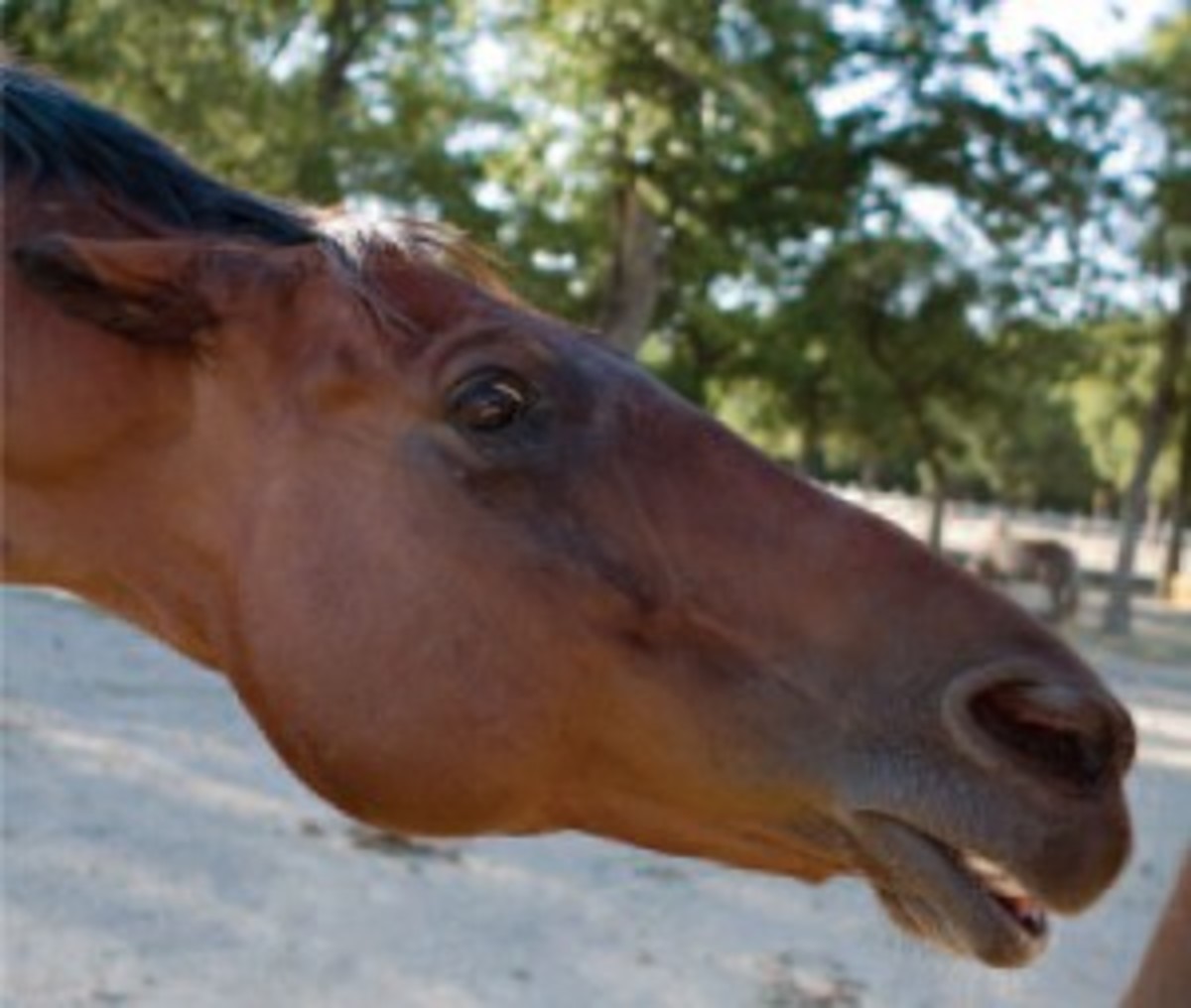
Ever wonder what’s going on inside your horse’s head? What makes him act and react the way he does?
Temple Grandin has a better idea than most. She’s the celebrated animal scientist whose autism enables her to see things the way animals probably do. Her bestselling book, Animals In Translation (Scribner, 2005) teems with unique insights; the book’s subtitle is “Using the mysteries of autism to decode animal behavior.” Because of her autism, Grandin doesn’t think in words, as most of us do. She thinks in pictures. Animals, who are wordless, likely visualize their thoughts in a similar fashion. This puts Grandin in a unique position to speculate on how animals think and feel.
For this special report, we pored through Animals In Translation to discover Grandin’s most compelling observations about horses. We also spoke at length with the Colorado State University professor, herself a horse fancier who rode as a teen. We’ll share her explanations of such phenomena as why a horse’s fear is “faster” than ours; what a horse sees that we probably don’t; and why rough handling of a horse can create lifelong phobias.
We’ll also suggest how you can make the best use of Grandin’s insights in riding and handling your own horse.
Scary Pictures
We all know that, as a prey species, horses have certain hardwired behaviors designed to help keep them safe from predators. As Grandin explains it, they use emotions to “predict” the future and thereby make wise decisions.
“A healthy animal makes sound, emotion-based decisions all the time,” she observes.”He has to; otherwise he’d be dead.” For example, fear of the scent of a predator causes a prey species to run away and escape being caught.
That makes fear a basic, predominant emotion for horses. We tend to refer to a horse’s excitability or his spookiness or his level of agitation, but what it all boils down to, says Grandin, is fear, which horses and all animals experience far more vividly than we do.
“Fear is so bad for animals, I think it’s worse than pain. I always get surprised looks when I say this. If you gave most people a choice between intense pain and intense fear, they’d probably pick fear. I think that’s because humans have a lot more power to control fear than animals do.”
And that’s because, she explains, we can use our analytical faculties courtesy of our prefrontal cortex?to understand and rationalize our fears, whereas animals cannot. All your horse knows is, “This is scary, which means I’m in danger of being killed, which means I need to get outta here.”
Another thing that “awfulizes” fear for horses is the visual nature of their thinking. Consider, if you will, how much scarier a picture of Freddy Krueger is than a verbal description of him. The image has much more impact, right?
By the same token, “a visual memory of a scary thing is more frightening than a verbal memory,” says Grandin. “When it comes to managing their fear, animals and autistic people are at a big disadvantage because they have to rely on pictures.”
Fast Fear, Slow Fear
Another way horses and other animals differ from us is that they tend to experience fear “faster” than we do. There are two ways fear is experienced in the brain, depending on whether it takes what Grandin calls the “high road” or the “low road.” The high road gives you “slow fear” because its physical path through the brain is longer than the low road.
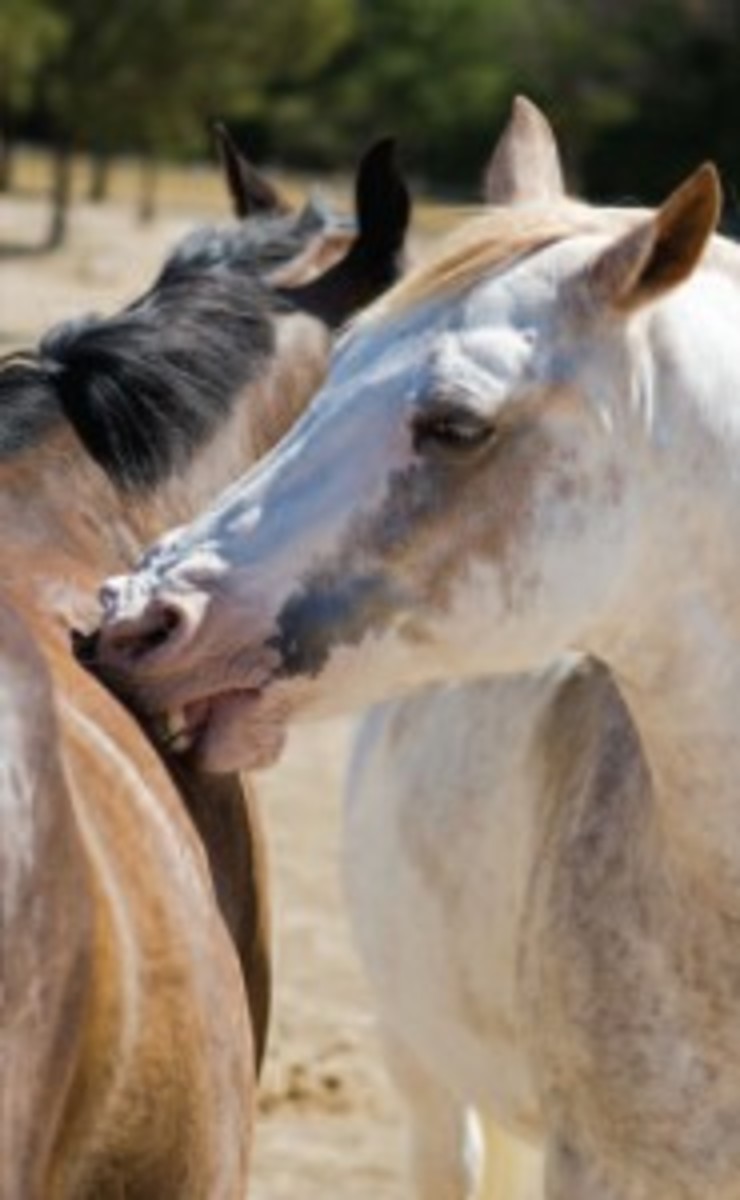
“On the high road,” explains the scientist, “a scary stimulus, such as the sight of a snake in your path, comes in through the senses and goes to the thalamus, located deep inside the brain. The thalamus directs it up to the cortex, at the top of the brain, for analysis. When it gets there the cortex decides that what you’re looking at is a snake, then sends this information; it’s a snake!?back down to the amygdala, and you feel afraid. The whole process takes 24 milliseconds.”
By contrast, the low road, or fast-fear system, takes half the time. You see a snake in your path, and the sensory data goes straight from your thalamus over to your amygdala, avoiding the cortex. The whole process takes 12 milliseconds. Nature gave us both systems because you can’t get hyper speed and accuracy in the same system.
“The fast road is quick and dirty,” says Grandin. “You see something long, thin, and dark in your path, and your amygdala screams, ‘It’s a snake!’ Twelve milliseconds later your cortex has the second opinion: either, ‘It’s definitely a snake!’ or, ‘It’s just a stick.’ The reason fast fear can be so fast is that accuracy is sacrificed for speed.”
High road fear is also conscious (you know what you’re afraid of); low road fear is not “you’re running away before you know what you’re running away from,” says Grandin.
Your horse, as you might have guessed, depends primarily on low-road, fast fear, so he’s going to respond to something scary much more quickly than you would. That’s often what catches you off guard.
Grandin says the inborn temperament of animals also plays a role, as some species and breeds are even more sensitive to fear than others. She calls these more fear- prone animals, which tend to be finer boned than less sensitive types, “fear monsters.” Arabian horses in general fall into this category; as a result, they tend to have a low tolerance for rough handling.
“Some trainers swear rough handling is effective. But what’s interesting about these trainers is that if you check out their horses, they’re all big-boned, low-fear horses who habituate fast to treatment that would crush a high-strung animal” such as an Arabian. (For you Arabian lovers, note that Grandin also observes that high fear and high sensitivity tend to correlate with intelligence; the greater “awareness” of such horses makes them highly trainable by the right methods.)
Emotional Learning: ‘The Bad File’
Another important point, says Grandin, is that animals in general, and high-strung animals in particular, never really unlearn a traumatic fear.
“All intensely emotional learning is permanent,” she says, adding that Nature made it that way so that the memories of things that the horse thinks may cause him harm (his definition of “scary”) are automatically preserved.”For a horse, a traumatic fear memory is like a bad computer file. A rider the horse trusts can train him to close the file and hold it closed, but it’s still there, and can re-open under the right circumstances.”
She tells the story of a rope horse that had become phobic about anything touching his hind end (the result of a bad accident). With his regular rider to reassure him, the horse would keep the bad-memory file closed. Then that rider went on vacation, and another person rode the horse in a pen with cattle.
“One of the cows brushed the horse’s butt and the horse panicked, crashed through the fence, broke his leg, and had to be destroyed. The less-familiar rider didn’t know how to help the horse keep the file closed.”
Grandin adds that the first time a horse experiences something is the worst time for him to be traumatized. For example, a horse can ride in a trailer two dozen times, then experience a trailering accident and not come away fearful of the trailer as a result.
But if something bad happens the first time the horse enters the trailer, he’ll form a sensory-based negative association with the trailer that will be permanent meaning it’ll be part of that horse’s makeup forever. You may recondition him to accept loading and riding in a trailer, but the right circumstance can always re-activate his original traumatic fear.
Interestingly, Grandin adds, regarding an accident occurring on the horse’s 25th trip in the trailer, if the horse happens to smell burning rubber just at or before the moment of impact, he may become phobic about the smell of burning rubber. That’s because horses, like most animals, are what Grandin calls?
‘Super-Splitters’
That means they experience stimuli (sights, sounds, smells) in excruciating detail. They also see the differences between things much more than the similarities. They don’t see the forest, just trees, trees, and more trees.
Grandin calls this being “hyper-specific,” a term that comes from autism research. Like horses, autistic people are hyper-specific. And, like horses, they can be afraid of miniscule details in their environments.
Grandin’s favorite example of a super-splitter with a hyper-specific fear is what she calls “the black hat horse.” This was a gelding that had suffered abuse at some point by someone wearing a black hat. The horse had mistakenly identified the source of the abuse as the hat itself, and was thus terrified of any person wearing or even holding a black hat.
Horses frequently make this sort of inappropriate generalization, says Grandin, because their senses are on high alert and forming sensory memories at the time of a scary experience. Thus a horse sees a black hat as he’s being hit and forms a permanent picture-memory of black hats as instruments of torture. Or he gets badly tangled in a nylon horse blanket and forms a permanent sound-memory of nylon against nylon as a threat to life and limb. “You can put a cotton blanket on that horse and he’ll be fine,” notes Grandin. “But the sound of any nylon swishing will match with that particular sound memory and scare him.”
Sometimes it’s hard to suss out the cause of an unusual equine phobia. Grandin tells of a horse that was deathly afraid of long-handled tools, such as rakes and brooms. Turns out he’d had an accident in which he’d flipped over in cross ties while a thick blue lead rope was attached to his halter. As he went over backwards, he saw the blue rope as it fell across his chest and made a permanent picture-memory of it as the cause of his trauma. Later, long-handled tools especially those with blue handles matched that “scary” picture in his mind, thus caused him to feel unfounded (from our perspective) fear.
Being aware of how horses’ extreme (and often misleading) hyper-specificity causes traumatic fear can help you better understand and deal with your own horse’s irrational fears.
Words to the Wise Owner
What else can we infer about the best ways to ride, train, and handle our horses from Grandin’s unique take on the equine mind? Here are some key strategies:
Avoid creating fear memories. This is paramount. Because equine fears are so lasting, it’s far better to keep from creating them in the first place by proper handling and careful troubleshooting that keeps your horse, especially a young one, out of mishaps.
Appropriate training methods are also key. “I am totally against using punishment to teach an animal new skills,” says Grandin, who adds that punishing fear-motivated behavior is absolutely counter-productive, as it will only cause the horse to become more fearful.
“The worst scenario is one in which the horse is frightened and can’t get away,” she says. So teaching a horse to accept a halter by tying him up and letting him fight it out is guaranteed to form a traumatic fear memory that will plague the horse throughout his life.
If your horse has developed a phobic fear of something, it’s worth the effort to try to discover exactly what the trigger is. If it’s something that can be removed from the horse’s environment, such as a certain kind of saddle blanket or a particular bit, then do so.
Introduce novelty in a planned, positive way. Train your horse to be as comfortable with novelty and change as possible. Tie a yellow raincoat to his pasture fence, suggests Grandin, or have someone hold him nearby as you carefully raise the hood of your car. “It can be anything. You’re trying to get him to expect the unexpected, or at least not go ballistic when the unexpected happens.”
In training young horses, be aware that the saddle feels different to the horse at each step; Grandin calls this the “bucking strap effect.” The horse can be comfortable with the saddle when he’s just standing there, but when he starts to move, he’s suddenly more aware of that tight feeling around his middle. So help him acclimate to it gradually at a walk, trot, and lope, and through each transition in between gaits. In general, anything that combines “novelty and suddenness” can be a problem for your horse.
Before you take your horse to new places, as to his first show, be sure to prepare him for what he’ll experience there. “You have to do more than prepare for your classes,” observes Grandin, who says anything with quick action can set a horse off. “I’ve found that flags, balloons, and bikes are the big three.” Introduce items like these in a safe, familiar setting, and your horse will be much less likely to freak out when he sees them in a new setting.
Be mindful of equine nature. Grandin says it’s important to assert dominance over a horse the way a horse would do it. That’s because horses, unlike dogs, “are less controlled by purely social stimuli,” meaning they’re less likely to do something simply to please you. So the so-called “natural” methods of establishing yourself as the leader over your horse, such as making him move out of your personal space, are most effective.
Grandin also agrees with Clinton Anderson and other clinicians who assert that horses learn best when their feet are moving. “Movement is basic to learning,” she says. “It’s true for autistic children, as well. They learn much better when they can move around as opposed to when they’re made to sit still.”
To avoid stressing your horse, be aware of signs that he’s becoming agitated whenever you’re working with him. “Is his tail swishing? Is he sweating overly or quivering? End the lesson before he blows up. Don’t make a training session longer than he can comfortably stand it, and always quit on a good note,” she says. And, to up the odds that your horse “gets” what you’re trying to teach him, make sure all rewards come within one second of the action being rewarded. “Otherwise, your horse won’t make the association. That’s because a horse has less ‘association cortex’ in his brain than humans do, our computer is 10 times bigger than his is.”
We owe it to our horses to make use of that much-bigger computer to the benefit of their well-being and happiness.
In Tune With Animals
Dr. Temple Grandin, bestselling author of the groundbreaking Animals In Translation, is celebrated worldwide as an advocate for animals. Her work with fast-food chains (including McDonald’s, Burger King, Kentucky Fried Chicken and Wendy’s) has helped to improve the quality of life?and death?of the animals we eat. Her pioneering theories on both autism and animals have landed her on major television shows (“48 Hours,” “20/20,” “Larry King Live,” and “The View” with Rosie O’Donnell, among others) as well as on National Public Radio.
A professor at Colorado State University, Grandin is herself an animal lover (the dedication to her book says simply, “For the animals”). As a teen, she spent “every spare moment working the barns” to be with horses at the boarding school she attended.
Although Animals In Translation touches on a menagerie of beasts from cows, pigs and parrots to wolves, dolphins and prairie voles?it gives special attention to dogs and horses.
For more information on Grandin and her work, go to www.grandin.com.
Senior editor Jenny Meyer says Grandin’s Animals In Translation is one of the most revelatory books she’s read in recent years.

